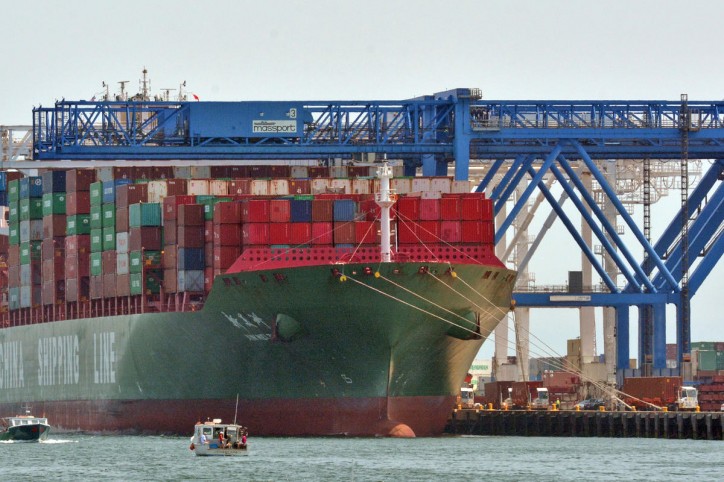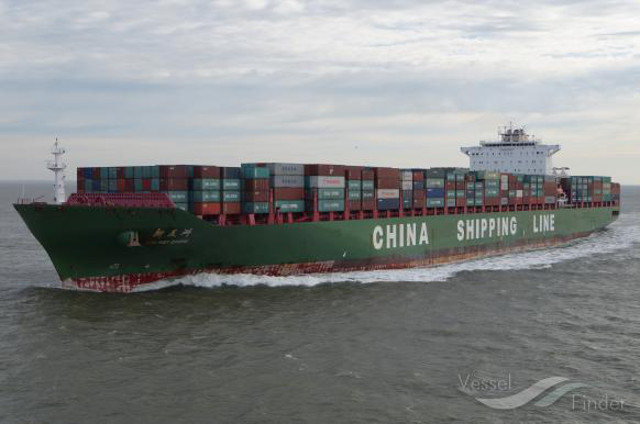COSCOCS, one of the largest container operators in the world, upgraded its service into the Port of Boston Sunday with a vessel that can carry more than 8,500 TEUs (20-foot equivalent units), Conley’s largest cargo ship to date. The Port is responsible for $4.6 billion of economic activity and 7,000 direct jobs.
“This is an exciting time at Conley as we have seen double digit growth in both imports and exports this year,” said Massport’s Port Director Lisa Wieland. “Having calls by larger ships is the future, and the Port is working diligently to accommodate them.”
The massive China Shipping Line container ship Xin Mei Zhou arrived at Conley Terminal in Boston Image courtesy: Chris Christo /BH
The ship, COSCOCS’s Xin Mei Zhou, arrived Sunday morning and departed Sunday evening. The ship is almost 1,100 feet long and will carry 8,530 TEUs.
Conley currently services ships that carry 4,000 to 6,000 TEUs. Following the opening of the expanded Panama Canal on June 26th, COSCOCS and its partners in the CKYHE Alliance announced deployment of 8,500 TEU sized vessels on the Asia to East Coast route. Shipping lines continue to indicate their intention to deploy vessels carrying 10,000 to 12,000 TEUs in the future.
Container ship Xin Mei Zhou - Image: Pekka Järvinen
The need for a new berth, landside improvements and harbor dredging are all being addressed by the Massachusetts Congressional delegation, the Commonwealth, Massport, and the US Army Corps of Engineers. Wieland commended the abilities of the workers who have brought significant improvement to the Port’s efficiency.
Earlier this month, Massport was notified it would receive $42 million as part of the U.S. Department of Transportation’s FASTLANE grant program. The grant funding will be used to upgrade existing facilities at Conley to better handle larger ships coming to Boston now.
Massport could potentially get $107 million in state funding from the economic development bill submitted by Governor Baker’s administration. That funding would go towards the building of a new berth and larger cranes to handle larger ships carrying more cargo.
Source: Port of Boston


